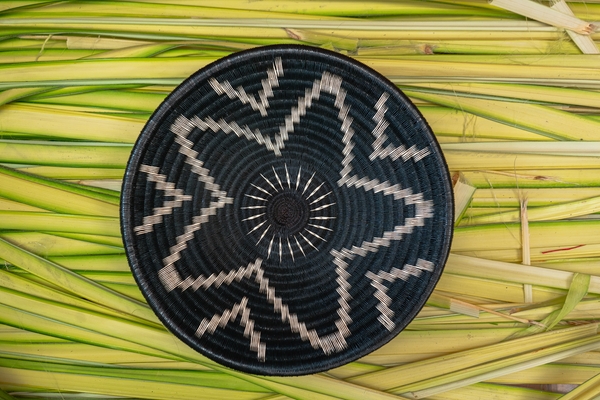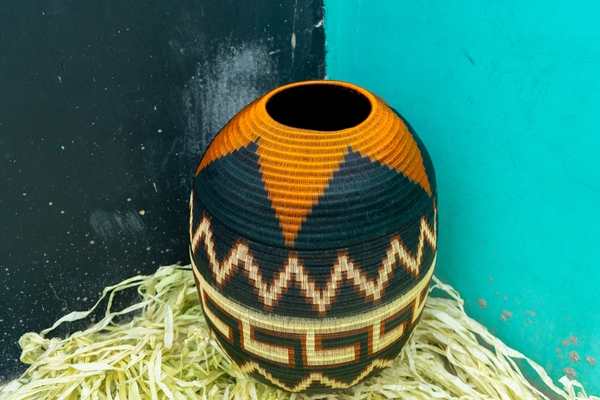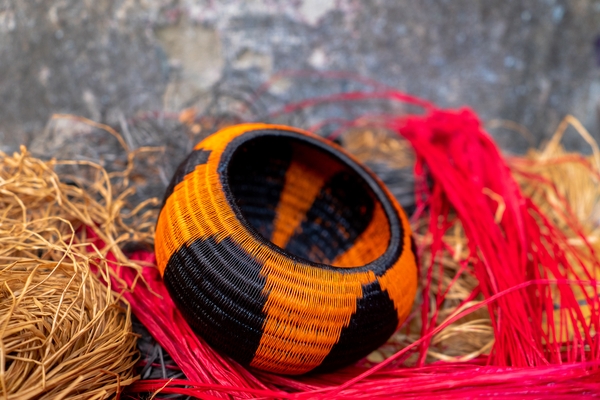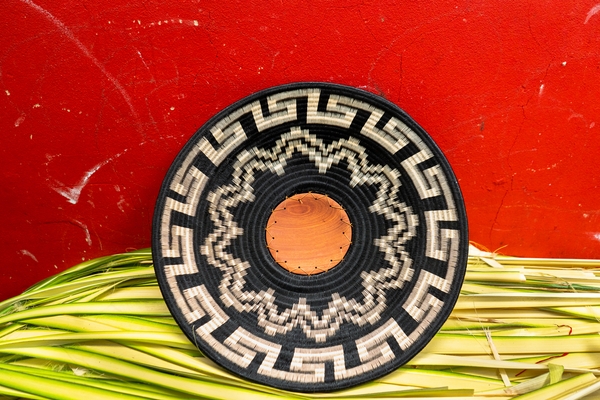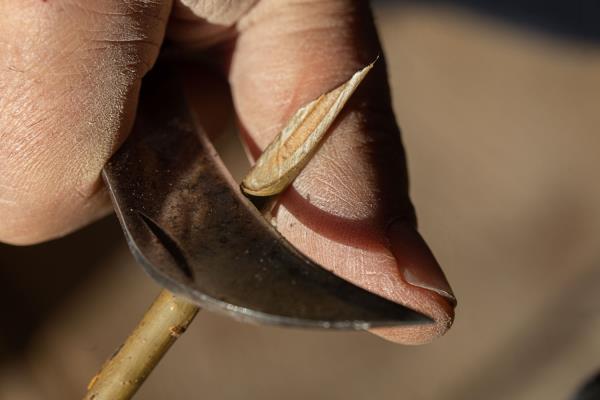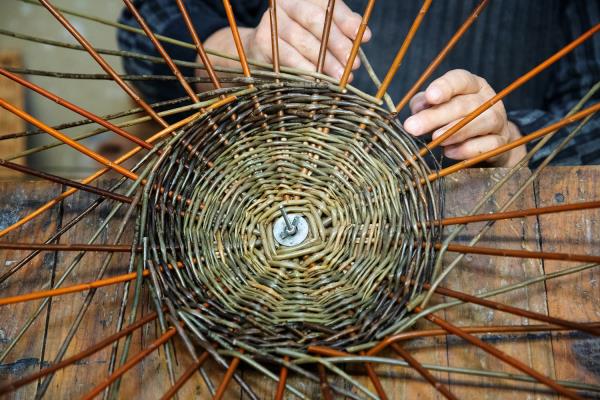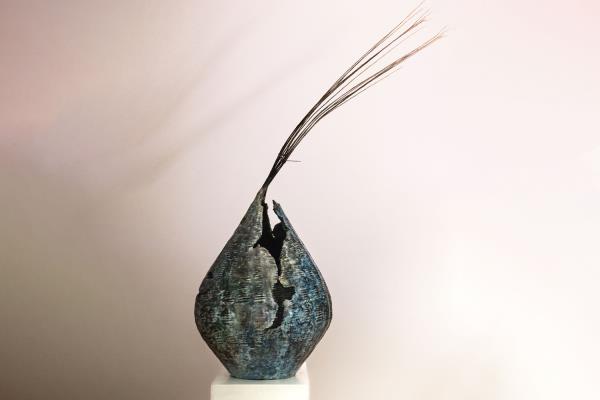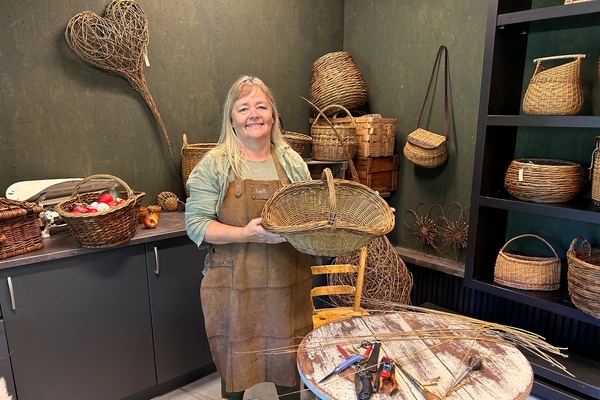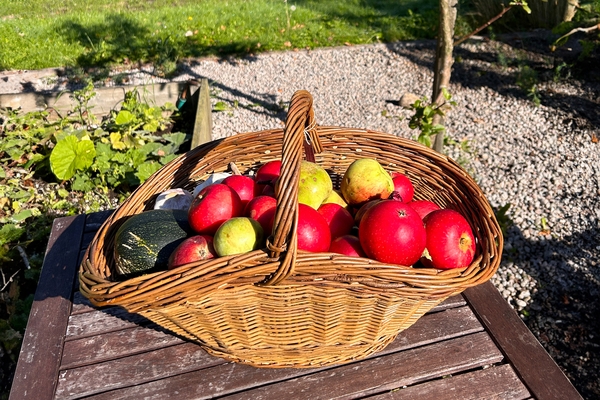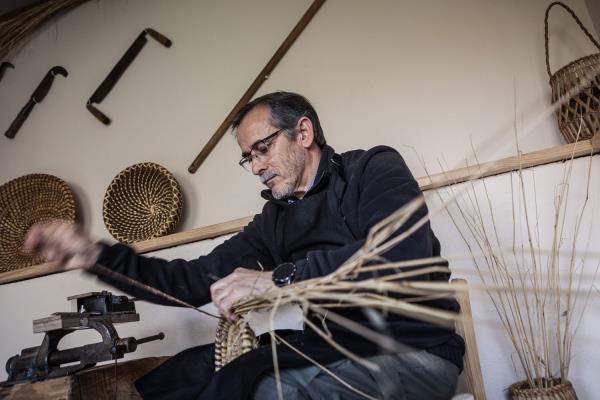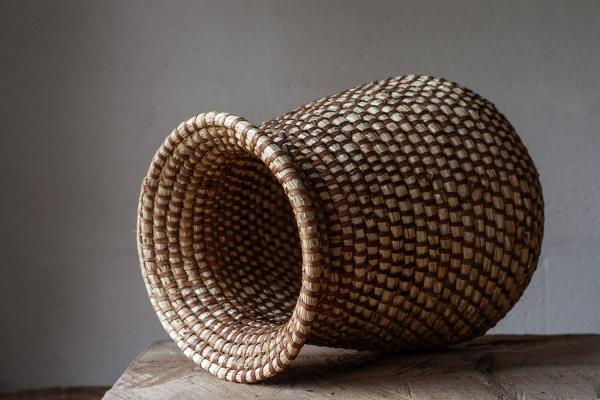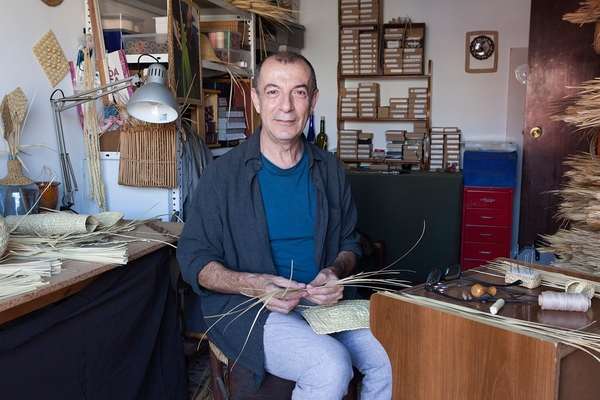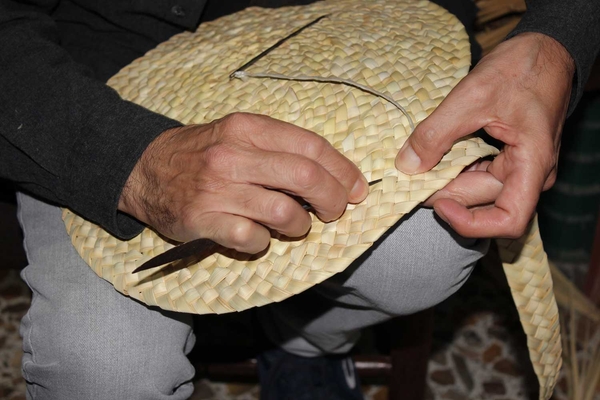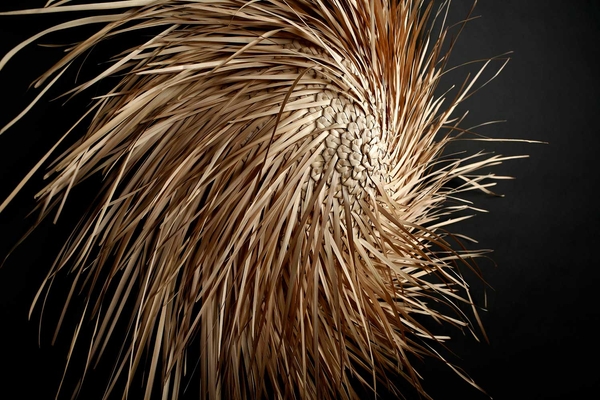




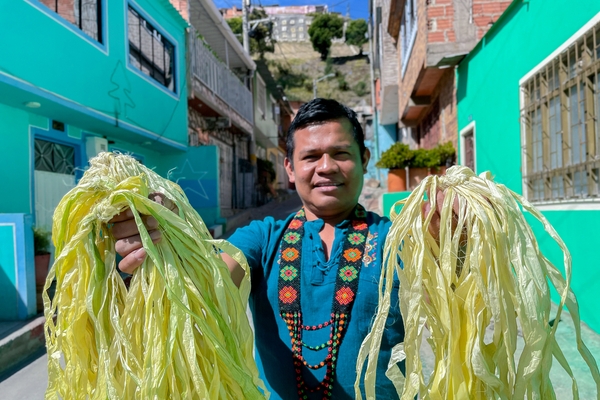
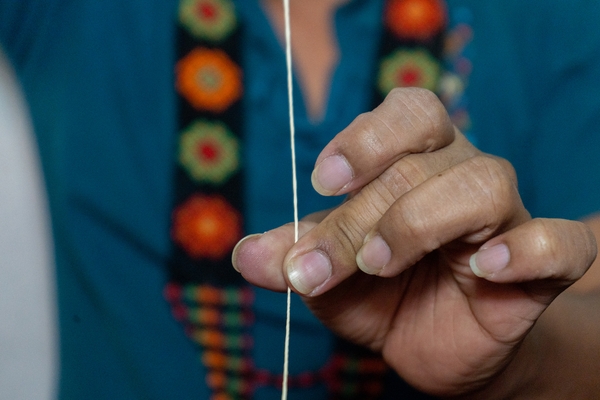
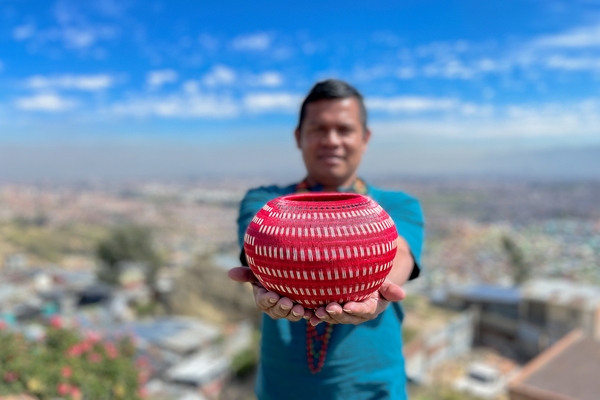
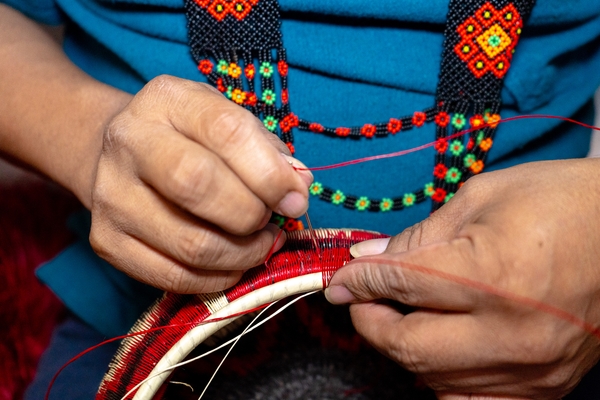
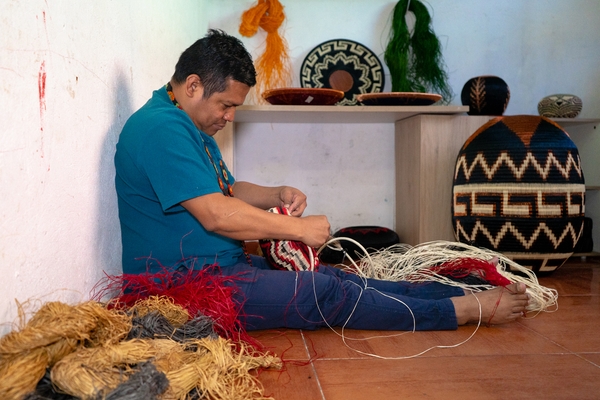
A life tied to the werregue palm
- Arcenio is at the head of a displaced Wounaan community living in Bogotá
- Basketry is not commonly practised by men in Colombia
- He has been teaching his craft at El Rosario University since 2020
The San Juan River serpents within a dense tropical forest, looking for an exit to Pacific waters. Along its banks, the centennial Wounaan community lives in harmony with nature. It is here that Arcenio Moya was brought up, observing how the women in his community tamed the thorny fibres of the werregue palm tree, an endemic specie of the Colombian Pacific coast. In 2004, Arcenio was forced to move to Bogotá. "It was a different type of jungle,” he explains. This is where he learned to adapt and lead others as a displaced victim of the armed conflict in Colombia. By harnessing werregue weaving, he turned this ancestral craft into a tool for cultural and economic sustainability. The sophisticated, vibrant coloured basketry of the Wounaan—created through tight coiling and twining—enhances interiors worldwide, preserving the tradition and resilience of its people.
Interview
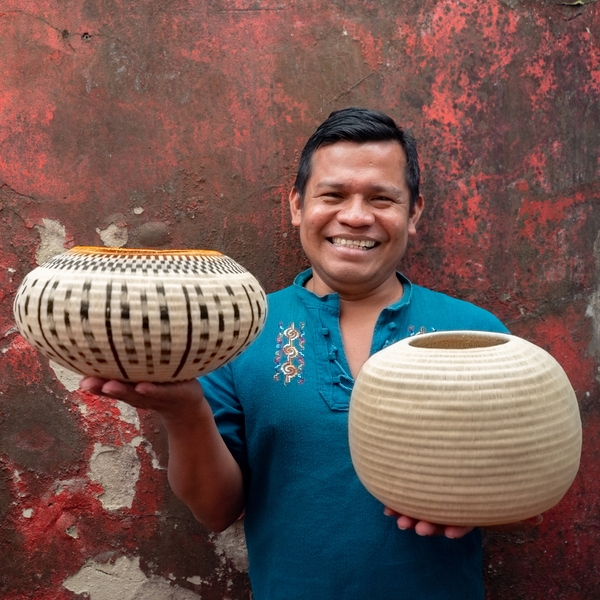
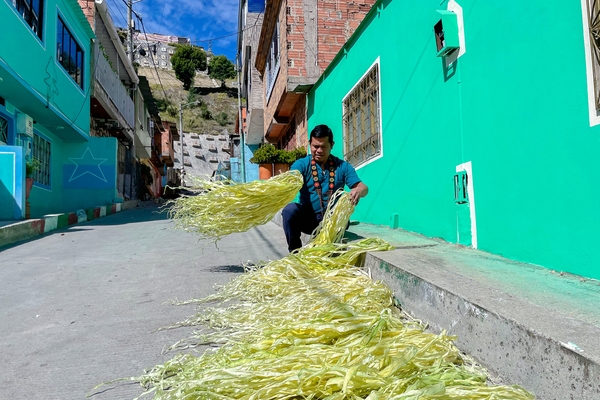
- How were you introduced to werregue weaving before being displaced?
- Werregue weaving is carried out by the women who learn the craft from a very young age. It is uncommon for men to weave, but in my case, I turned to it as a way to earn money for my studies. I learned the technique when I was around 12 and would secretly work on my pieces. My mother taught me how to explore colour palettes with natural dyes and colour combinations.
- How do you source your werregue fibre?
- The palm has been significantly threatened by unsustainable harvesting. In our community, men collect the palm along the San Juan River and deep in the forest. The pinnae, from where we extract the fibre, is carefully removed and the fibre travels from the forest via river to the ocean, then returns inland through the Port of Buenaventura before reaching Bogotá. I keep a minimum stock of 10 pinnae to ensure I always have enough raw material.
- Do you teach your craft to students?
- I was asked to teach the art of werregue weaving at El Rosario University’s Faculty of Creative Studies in 2020. It was quite challenging to adapt a technique I learned from childhood, deeply tied to our customs and universal view, into a formal teaching environment.
- How is your business evolving to preserve your cultural identity?
- Nawema supports a network of Wounaan women who weave both in Bogotá and in our home territory. Our essence remains uncompromised since it is a very meticulous creative effort. The ancestral techniques, combined with the weaver’s emotions and conceptual abstractions, are preserved in every piece, be it a collaboration or a bespoke commission.
Arcenio Moya is a rising star: he began his career in 2018 and he started teaching in 2020
Works
Where
Arcenio Moya
